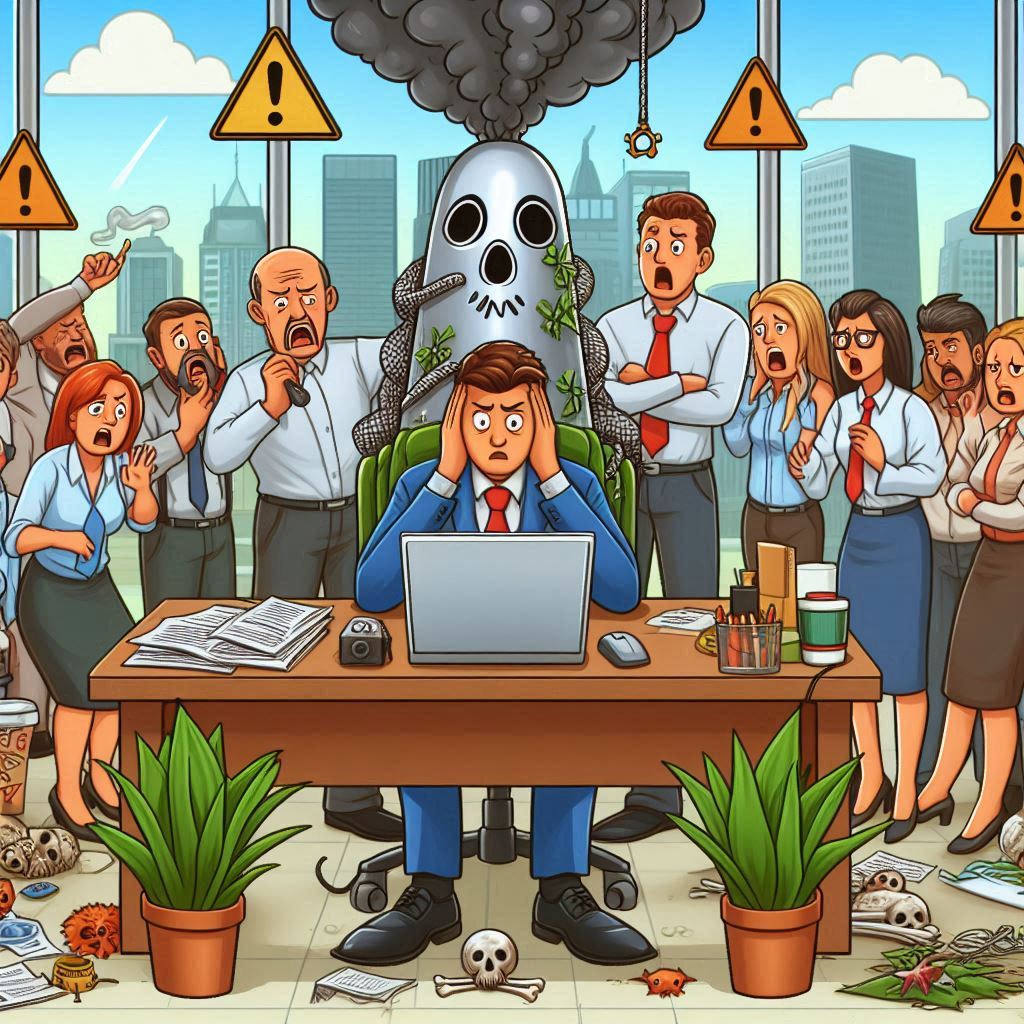
Toxic work cultures poison the very essence of an organization, affecting team morale, productivity, and long-term growth. In this blog post, we’ll explore five insidious behaviors that can thrive in toxic environments and their impact on both employees and companies.
Victimization: The Blame Game
When employees feel victimized—whether through unfair blame, scapegoating, or unjust treatment—it corrodes trust and collaboration. The toxic fallout includes reduced productivity and increased stress.
Scenario: Imagine a project gone awry. Instead of collectively addressing the issue, the manager singles out one team member, blaming them for the entire debacle. The team’s morale plummets, and innovation stalls.
Taking Advantage and Credit: The Credit Thief
Superiors who snatch credit for their team’s hard work undermine trust. When employees’ contributions go unnoticed or are appropriated, motivation wanes, and innovation suffers.
Scenario: Sarah, a talented designer, pours her heart into a client presentation. Her manager, however, presents it as his own brainchild during a high-stakes meeting. Sarah feels demoralized, and her enthusiasm wanes.
Mental Torture and Pressure: The Slow Burnout
Micromanagement, relentless pressure, and unrealistic expectations create a mental torture chamber. Burnout, anxiety, and depression follow suit.
Scenario: Mark, a software developer, faces constant scrutiny. His manager hovers over every line of code, questioning his decisions. Mark’s stress levels soar, and he starts dreading work. Eventually, he quits, leaving the team in disarray.
Ignorance: The Silent Saboteur
Ignoring employee concerns, feedback, or development needs alienates staff. When leaders dismiss input, employees disengage. The result? Missed opportunities for improvement and a stagnant work environment.
Scenario: Emily suggests process improvements during team meetings, but her manager dismisses them. Over time, Emily stops sharing her ideas, and the team misses out on valuable optimizations.
Micromanagement: Strangling Creativity
Micromanagement stifles autonomy, creativity, and growth. When leaders hover over every detail, employees lose confidence and innovation grinds to a halt.
Scenario: James, a marketing specialist, can’t make a move without his manager’s approval. His creativity withers, and the campaigns become predictable. The company loses its competitive edge.
Impact on Team Morale and Company Growth
Toxic cultures have far-reaching consequences:
- Low Morale: Disengaged employees hinder collaboration and productivity.
- Talent Drain: Toxic environments repel skilled professionals.
- Reputation Damage: Negative word-of-mouth affects clients, partners, and investors.
- Innovation Stagnation: Toxicity stifles creativity and long-term success.
In conclusion, organizations must actively combat toxic behaviors. Leaders should foster open communication, recognize employee contributions, and create a safe space for growth. Only then can companies thrive and build a sustainable future.

